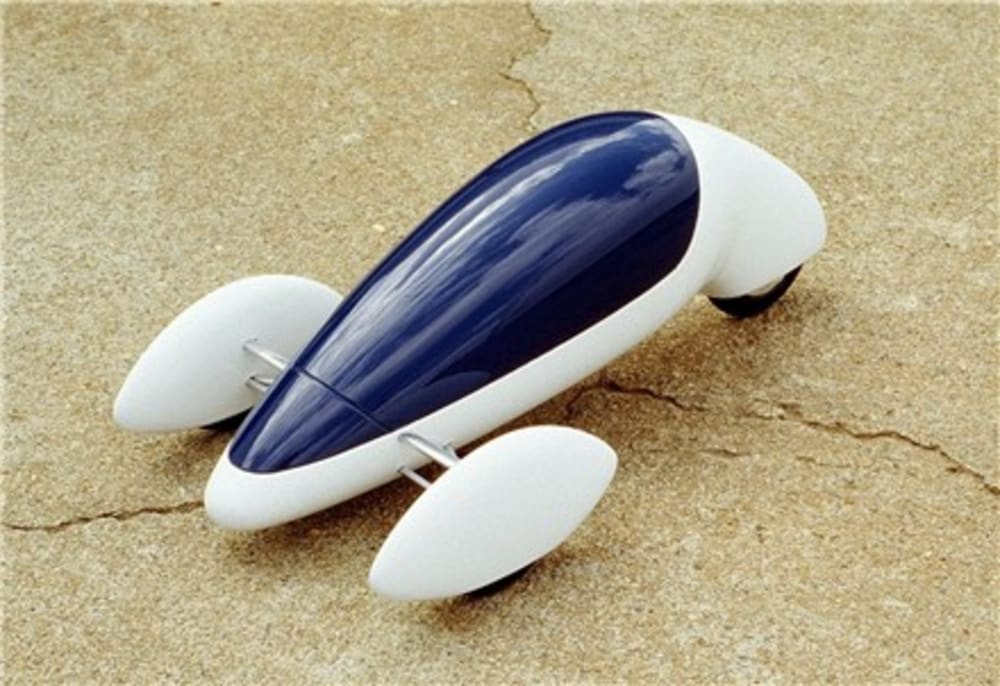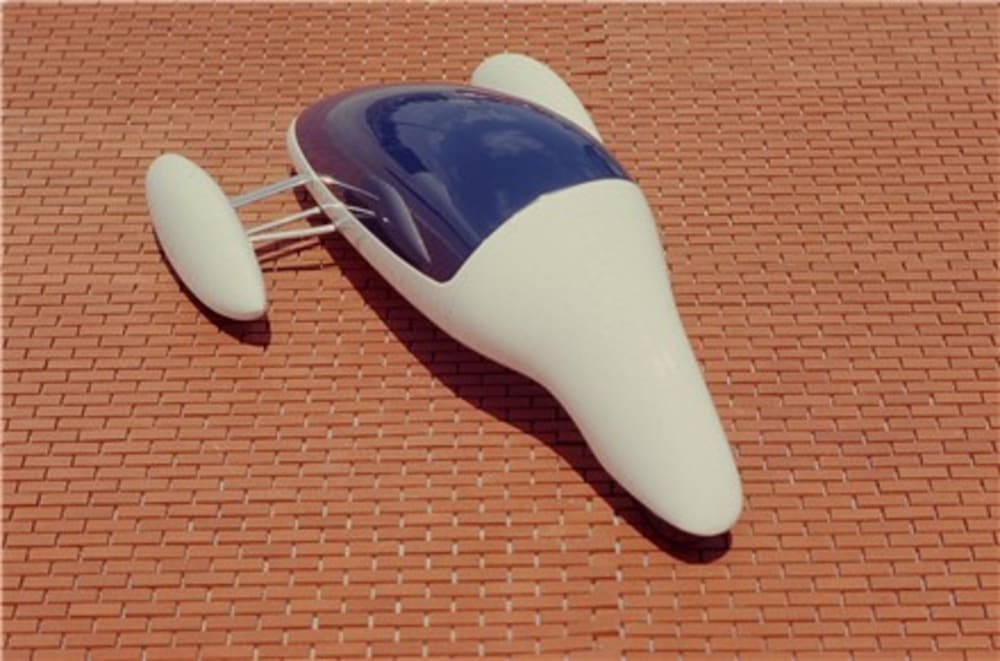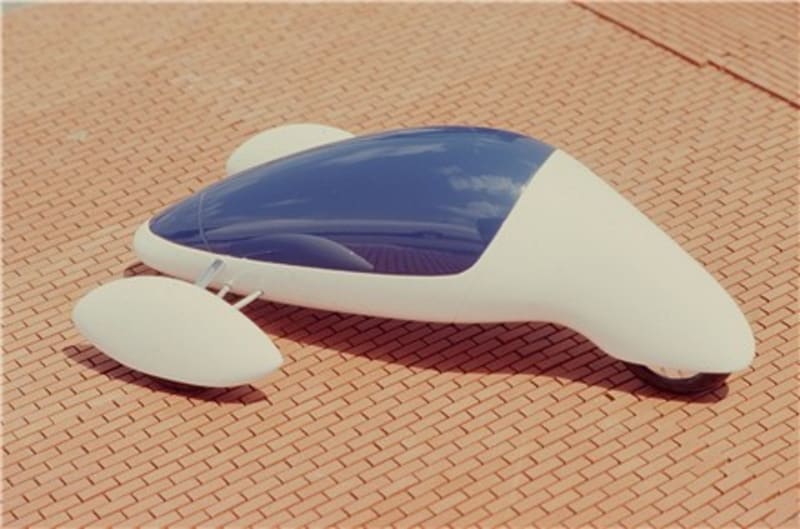The Solo is a high performance, single seat vehicle designed to explore new ideas in personal transportation. It is the product of many years of experience in the high-performance automotive, aircraft and composite materials industries. The Solo is ultra-light, highly fuel efficient and offers the performance, comfort and safety of a conventional small vehicle while providing a rational, responsible and stylish alternative to established means of surface transportation, and addresses a number of drawbacks of the car as we know it.
To achieve very high fuel efficiency (target: 100mpg@ 60mph cruise), the Solo is aerodynamically clean and of low mass. The Solo’s shape borrows heavily from fiberglass sailplanes (gliders), undoubtedly the most aerodynamically efficient machines yet devised by humans.
There are obvious safety concerns surrounding a vehicle as small and light as the Solo (target: 600 lbs.) and a sailplane’s structure is not appropriate for anything sharing its operational environment with SUVs. So, innovative, proprietary uses of composite materials and state-of-the-art aircraft construction techniques, with advanced crash-energy management combine in a structure for the Solo providing occupant protection comparable to that of a small conventional car. Designed as an all composite stressed skin unit utilizing glass, aramid and carbon fibers, it provides a rigid, protective, energy-absorbing cocoon.
Composite materials have an infinite fatigue-life and are not subject to corrosion. Because of this, a worn-out but un-crashed Solo can be effectively recycled by stripping the mechanical parts, refinishing the shell, and reassembling with new or reconditioned components. The total-life-cycle energy cost savings of this old “Coke bottle” approach are apparent as compared to conventional automotive practice, which is essentially to melt the whole thing down and start over.
Predictable handling, braking and a comfortable ride are achieved utilizing a combination of off-the-shelf parts and proprietary suspension geometry. Originally conceived in 1984 to be powered by a small displacement gasoline or gaseous-fueled internal combustion engine, the Solo can be reconfigured to accommodate a variety of powerplants including battery-electric or IC/electric hybrid.
While classified as a motorcycle (having less than four wheels) and so allowed to use existing HOV and AltFuel lanes, the vehicle itself may qualify as a helmet, and provides full weather protection and high-efficiency air conditioning. Additionally, as the vehicle is entirely modular to expedite servicing, repair and recycling, production need not be entirely centralized. As designed, containerized kits can be distributed to remote locations for final assembly using common tools, and so provide employment for medium-skilled workers far from the factory.
The Solo UCV, while certainly not for everyone, offers an attractive and efficient solution to some of the problems associated with personal mobility, and could provide a step towards weaning America from dependence on foreign oil. A full-scale, functional prototype is now under construction.
Like this entry?
-
About the Entrant
- Name:William Engwer
- Type of entry:individual
- Software used for this entry:No significant software use so far
- Patent status:pending








